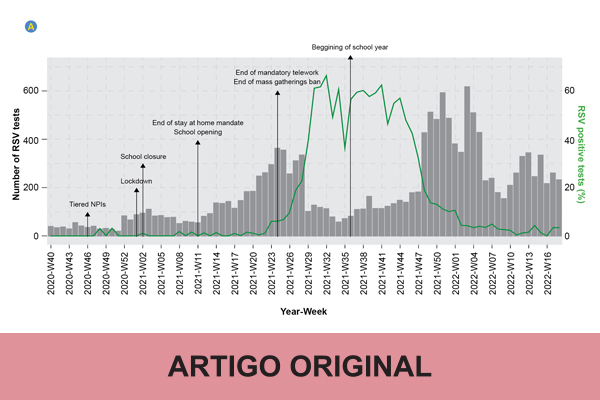SOCIAL MEDIA
Portuguese Medical Association's Scientific Journal

Introduction: An out-of-season increase in respiratory syncytial virus (RSV) incidence was observed in Portugal from June 2021 onwards, revealing a continuing surge in cases throughout 2021/2022 autumn/winter. We aimed to describe this out-of-season epidemic and define its epidemic period, by analysing RSV incidence from week 40 of 2020 (2020-W40) to week 18 of 2022 (2022-W18).
Material and Methods: Surveillance data on weekly RSV laboratory confirmed cases, in Portugal, was used to monitor RSV incidence using CUSUM test methodology for count data.
Results: In 2021-W23, the CUSUM score identified a significant increase in the risk of RSV. By that time, the percentage of RSV positive tests rose from 1% in 2021-W22 (3/265) to 6% in 2021-W23 (18/298). Despite a sharp decrease in RSV incidence on 2021-W33 and on 2022-W02, the CUSUM score stayed over the limit up to 2022-W07, indicating that the RSV activity remained at an epidemic level. Distinct peaks of RSV cases were observed between 2021-W30 and 2021-W32 (average of 77 RSV cases per week) and between 2021-W39 and 2021-W41 (average of 79 RSV cases per week) with positivity rates around 60%.
Conclusion: An out-of-season RSV epidemic was identified, with a longer epidemic period compared with previous seasons. Possible reasons include relaxation of COVID-19 physical distancing measures and a greater proportion of population susceptible to disease. As several factors may change the pattern of RSV activity, countries should implement year-round surveillance RSV surveillance systems. These findings might have an impact on public health planning regarding future RSV surges, namely, on the palivizumab prophylaxis period for high-risk infants.